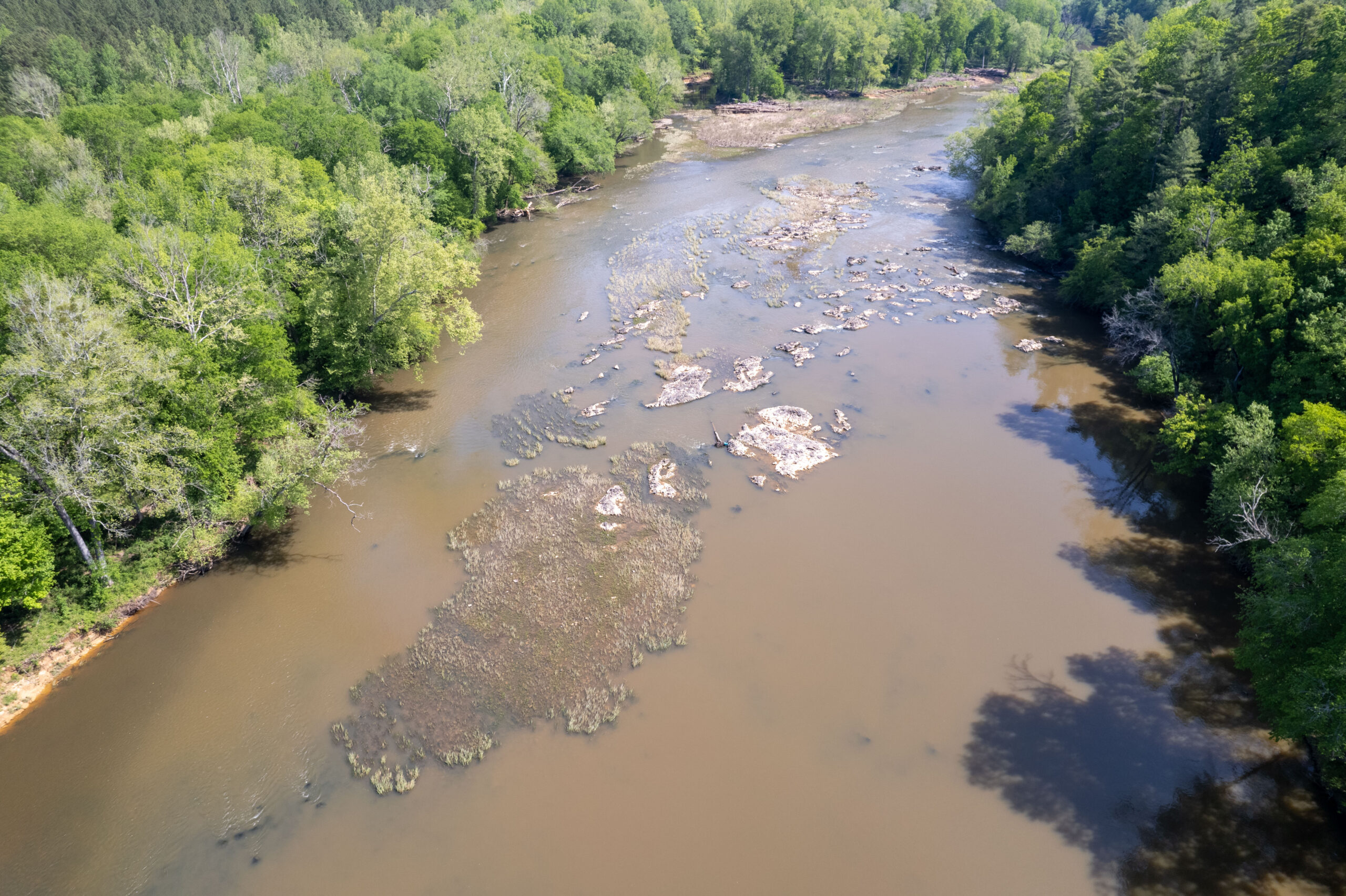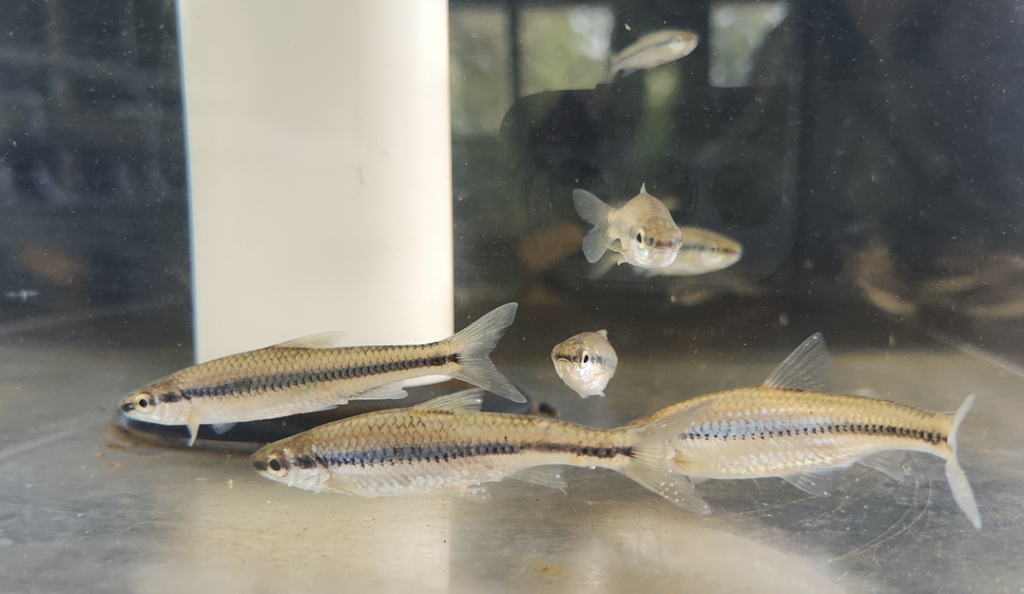Submitted by Bryn H. Tracy and Brena K. Jones
Reprinted from the Summer 2023 Issue of the Newsletter of the North Carolina Chapter of the American Fisheries Society
On the morning of April 20, 2023 under a beautiful Carolina-blue sky, members of the North Carolina Chapter of the American Fisheries Society (NCAFS) (Jennifer Archambault & Brandi Symons – U.S. Fish & Wildlife Service; Trevor Hall & Tom Dickinson – Three Oaks Engineering; Katharine DeVilbiss, Brena Jones, Vann Stancil, and Isabella Scheibl – North Carolina Wildlife Resources Commission; Chris Sheats – Transystems, Inc.; and Bryn Tracy) under the tutelage of Brena Jones participated in the second round of collecting Cape Fear Shiner (Miniellus mekistocholas, formerly known as Notropis mekistocholas) brood stock for propagation at the U.S. Fish & Wildlife Service’s Edenton Fish Hatchery. The releases following the first round were highlighted in the Winter 2022 NCAFS Newsletter (https://nc.fisheries.org/winter-2022-newsletter/ – Cape_Fear_Shiner_Augmentation).

Figure 1. Cape Fear Shiner, Miniellus mekistocholas, female. Photograph by Fred C. (Fritz) Rohde.
As many Chapter members know, or should know, the Cape Fear Shiner (Figure 1) is a federally listed endangered species found nowhere else in the world except for a very restricted distribution and precarious existence in central North Carolina (Figure 2).

Figure 2. Distribution of Cape Fear Shiner in North Carolina in 2019. Map created by Brena K. Jones.
With high flows in the Deep and Rocky rivers thwarting an attempt approximately two weeks prior, the crew decided to try it again under more favorable conditions just downstream from the confluence of the Rocky River with the Deep River in Chatham County. Even though the two rivers looked fairly muddy from a bird’s eye view (Figure 3) instream visibility wasn’t all that bad.

Figure 3. Just downstream from the confluence of the Rocky River (lower left) and Deep River, April 20, 2023. Island with beginning spring growth of Water Willow, Justicia americana, is in the foreground. Drone photograph by Vann Stancil.
Using two 10-12 ft. minnow seines, the two crews made quick work of the collection of about 100 mature and immature specimens from some of the species’ favored habitats: areas with new growth of Water Willow, Justicia americana, and last year’s aquatic grasses and sedges (Figure 4).

Figure 4. Crews seining the Deep River for Cape Fear Shiner, April 20, 2023. Photograph by Chris Sheats.
Some of the mature specimens were already starting to show the golden yellow breeding colors for which they are famous. Other vertebrates encountered that morning included Sandbar Shiners, Notropis scepticus, White Shiners, Luxilus albeolus, and an algae-encrusted slider (Figure 5).

Figure 5. No Katharine, that is not a Cape Fear Shiner. Photograph by Tom Dickinson.
After sorting and counting the specimens, the fishes were transferred to the hatchery truck where they comfortably traveled to Edenton, NC. After acclimation to their spawning aquaria, they quickly showed off their characteristic black chin stripe (Figure 6), confirming to the crew that they had indeed collected the right species. Now, the next step in this project is for the fish to do what they should do at this time of year so that their young-un’s can augment the Cape Fear River population later this year.

Figure 6. Cape Fear Shiner making themselves at home at the U.S. Fish & Wildlife Service’s Edenton Fish Hatchery. Photograph by Brandi Symons.
More information on the North Carolina Chapter of the American Fisheries Society can be found at: https://nc.fisheries.org/.